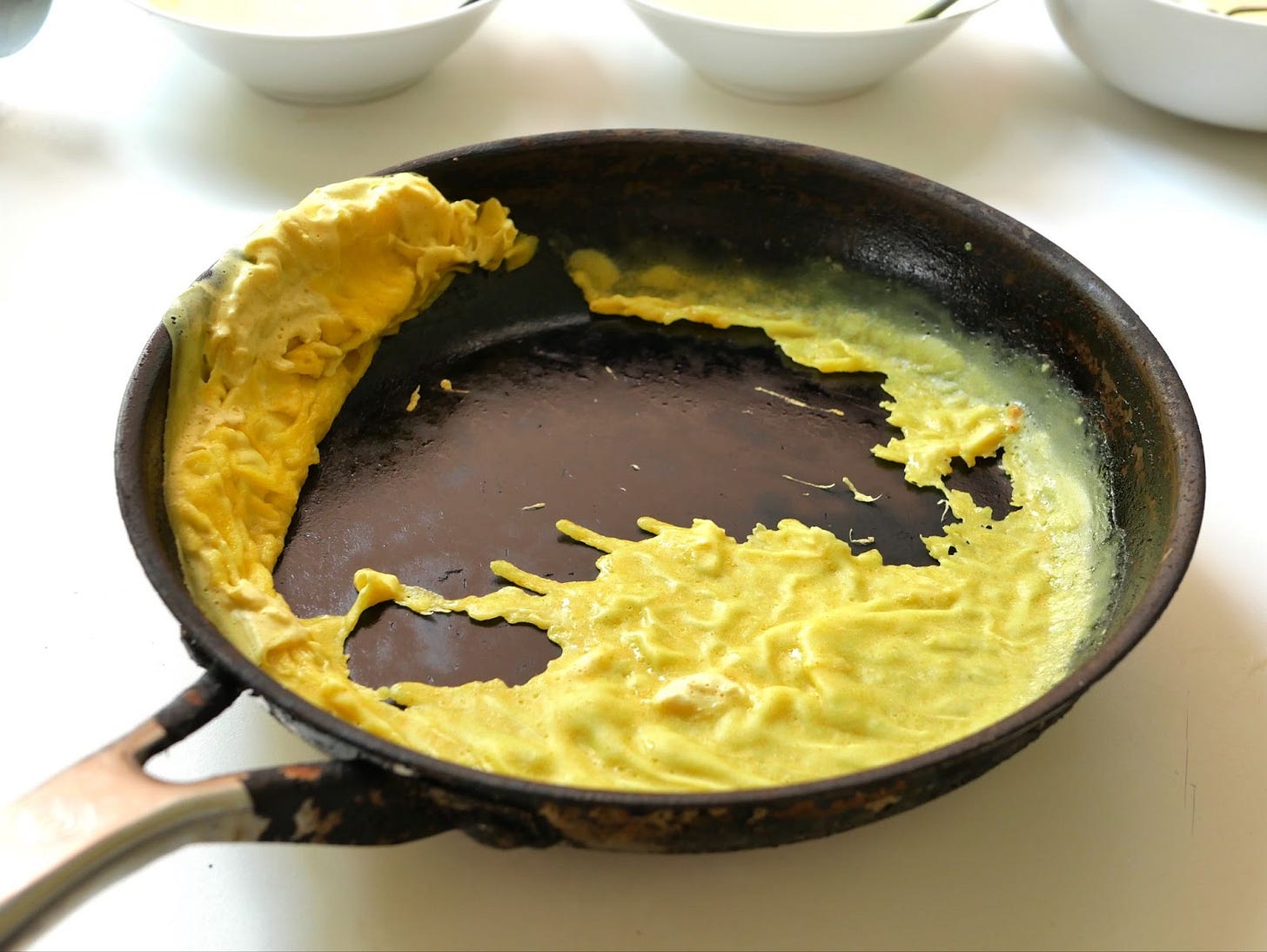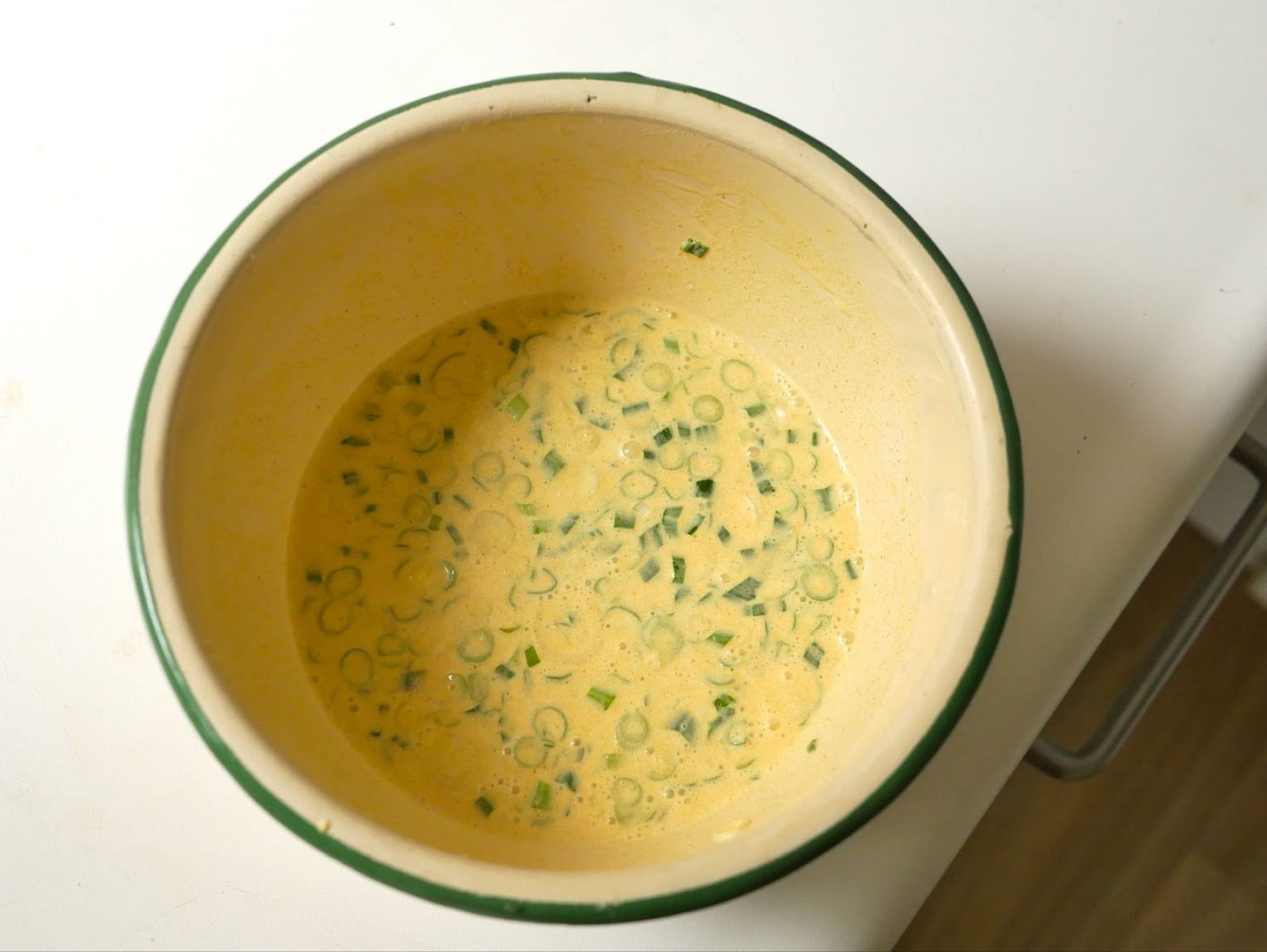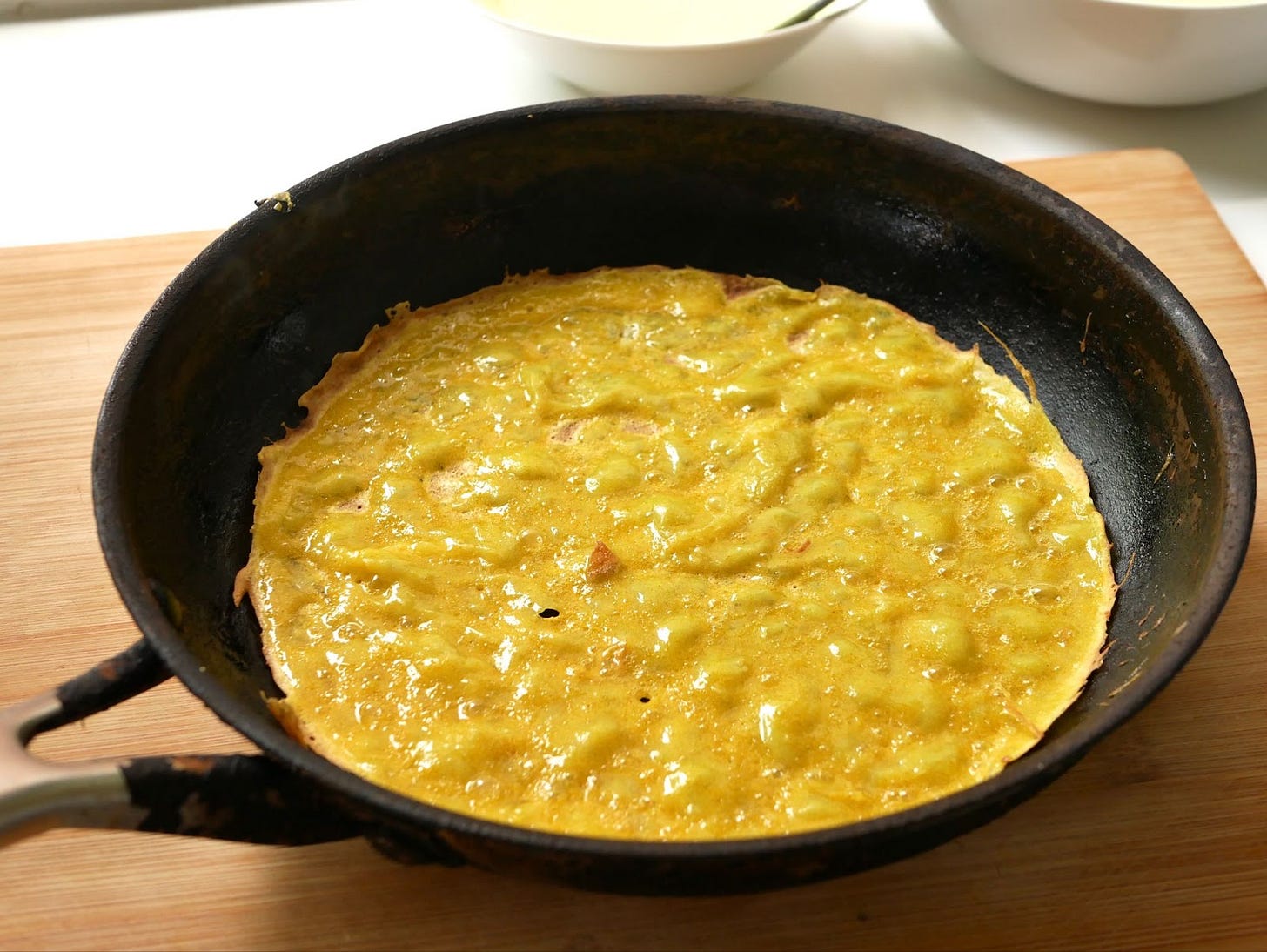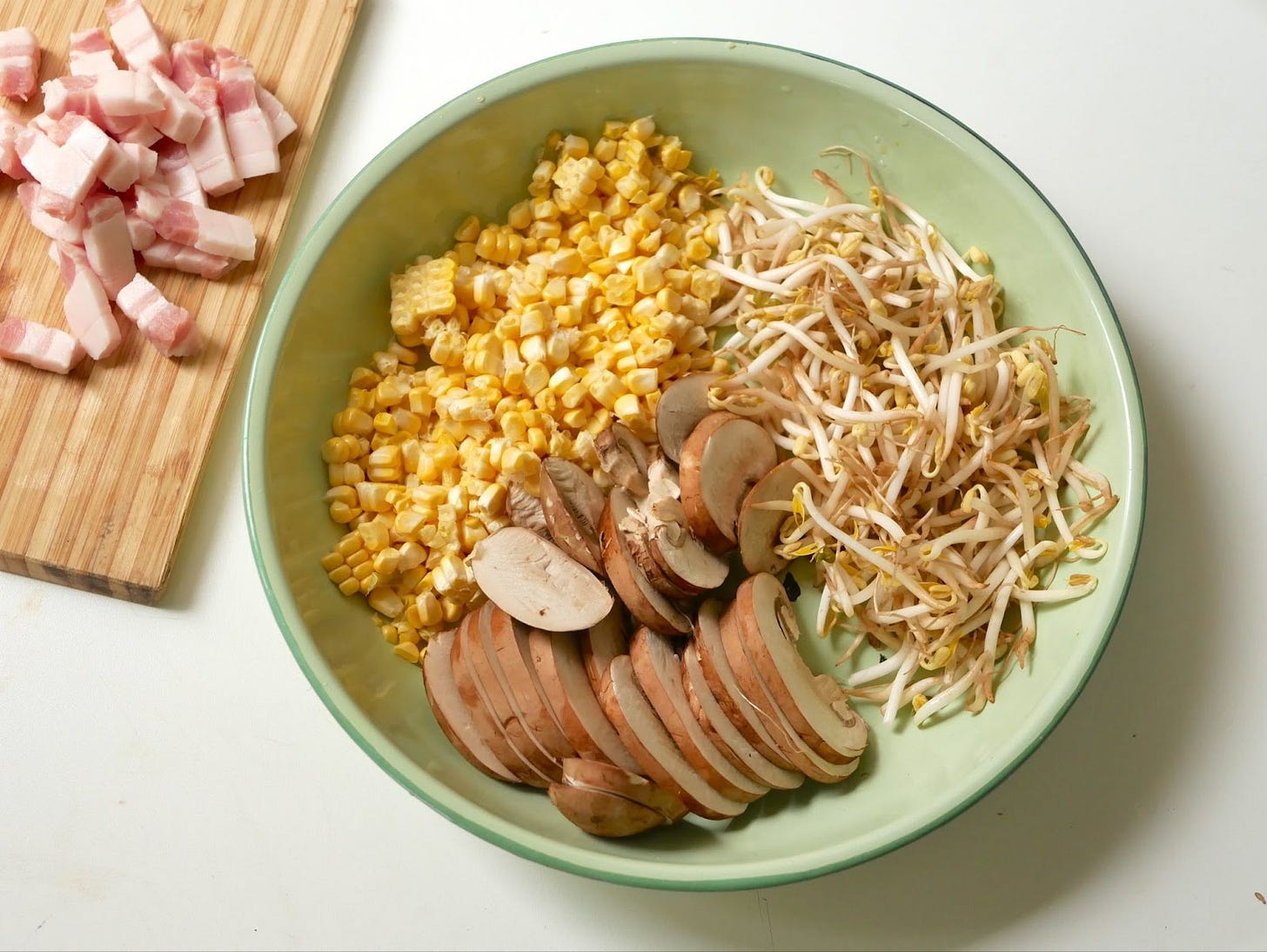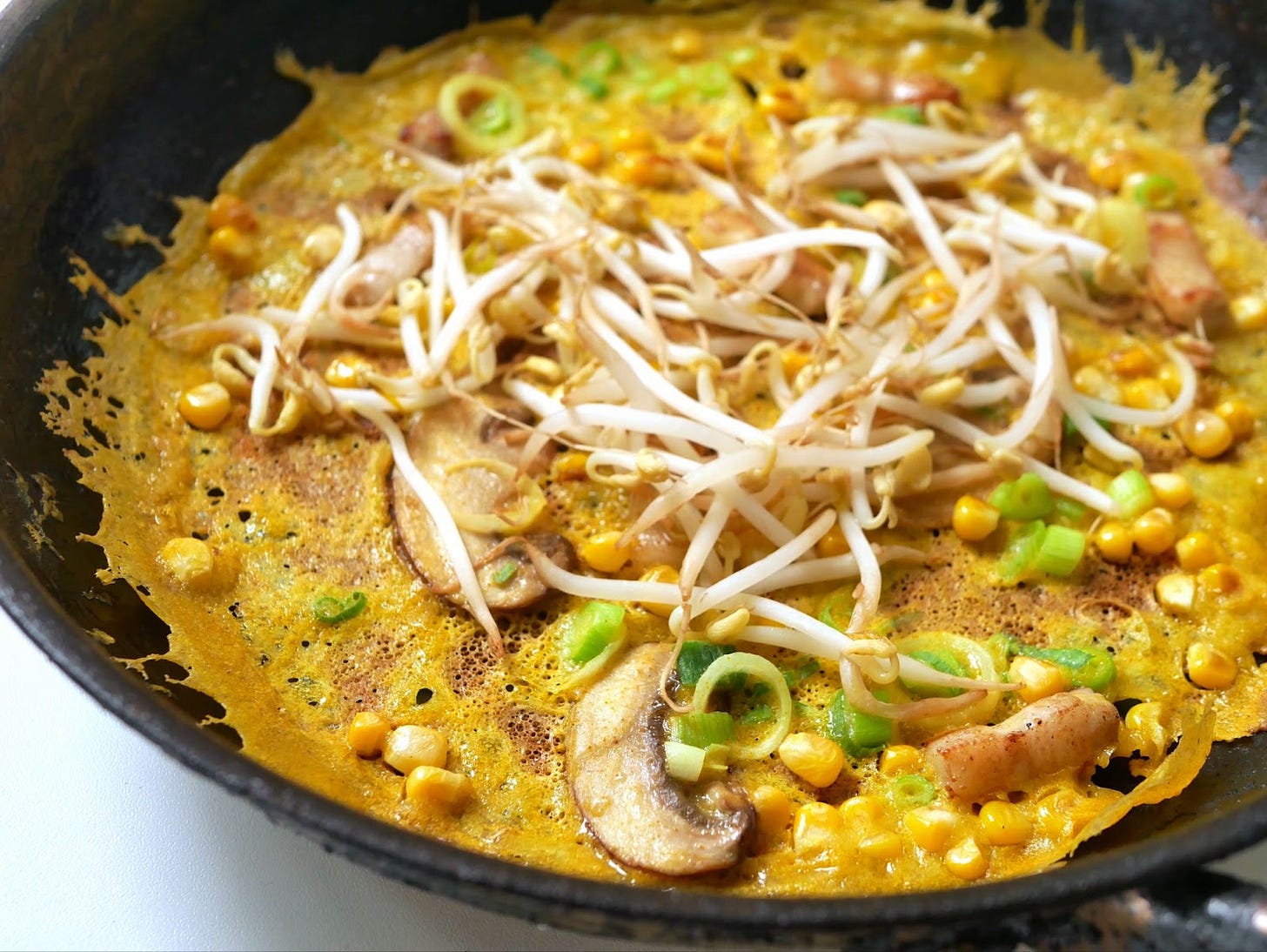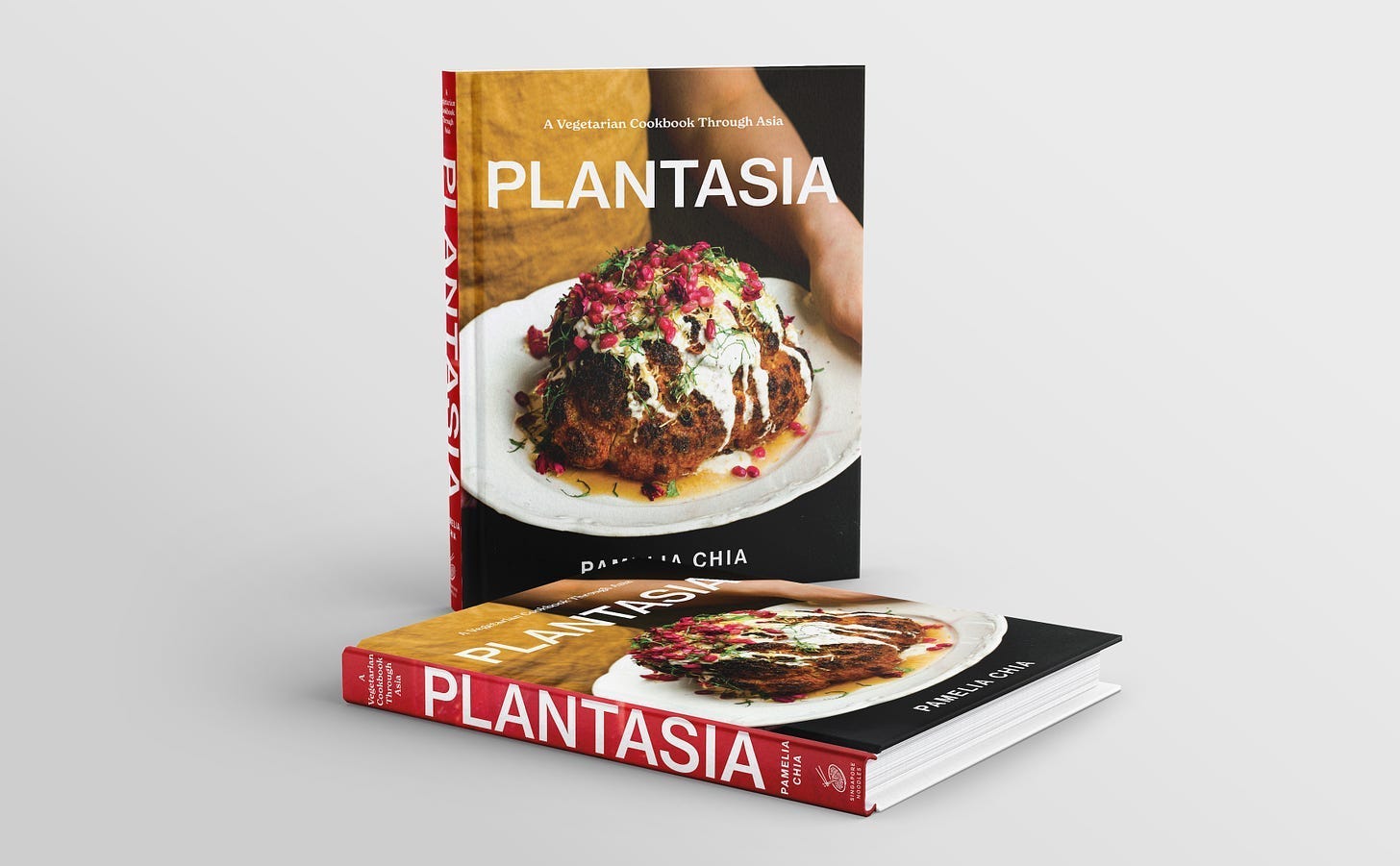✨ Welcome to Singapore Noodles, a newsletter dedicated to celebrating Asian culinary traditions and food cultures. Every Monday, you’ll be receiving a tasty mix of food history, stories, and recipes straight in your inbox. Archived recipes and other content can be found on the index. This newsletter is 100% reader-funded; each paid subscription supports the writing and research that goes into the newsletter, pays guest-writers, and gives you access to all content and recipes. Thank you for being here and enjoy this week’s post. - Pamelia ✨
One of my favourite things to order at Vietnamese restaurants is bánh xèo, an impressively large, whisper-thin crepe filled with beansprouts, pork, and prawn. The first time I had it was when we lived in Melbourne, a city blessed with high-quality Vietnamese eateries. Bánh is a loose term denoting bread, while xèo imitates the sizzling sound the turmeric batter makes when it encounters a hot greased pan. Served with lettuce leaves, herbs, and a dipping sauce, it is an incredible hot weather dish, being both intensely flavourful yet light and refreshing. Even though there’s a recipe in my cookbook Plantasia for it, I was keen to do a deep-dive all about it here on the newsletter.
The batter
Despite it looking very much like an omelette, bánh xèo has no eggs and derives its colour instead from turmeric. The batter is also gluten-free, leaning on rice flour instead of wheat flour for structure. Apart from turmeric and rice flour, all one needs is salt, coconut milk, and water.
To test the factors that produce the crispest bánh xèo, I made five different batches —here’s what I’ve learnt from these experiments:
Using a carbonated beverage: A well-known bánh xèo trick is to use some form of carbonated beverage in place of water in the batter. Like a beer batter or tempura batter, the extra aeration turns the batter light and crispy when fried rather than soggy and heavy. A Scientific American article explains this in more technical terms, “Put beer into a batter mix, and when the batter hits the hot oil, the solubility of the CO2 plummets, and bubbles froth up, expanding the batter mix and lending it a lacy, crisp texture.” Some cooks in Vietnam use beer, however, I’ve found the wheaty flavour of beer rather overpowering and distracting from the flavour of the turmeric and coconut. I use sparkling water instead; get an unopened bottle for maximum fizz.
Use Southeast Asian rice flour: Rice flours are not all made the same. Western brands and Indian brands tend to mill their rice flour to a grittier texture than Southeast Asian rice flour brands. Opting for the latter makes for a more uniform batter.
Add a little extra starch: Starch acts as the binder in the batter, allowing the bánh xèo to hold its shape and fry up nice and crisp. While bánh xèo is made chiefly from rice flour which is pretty high in starch, many cooks mix in a small amount of cornstarch. In fact, most prepacked bánh xèo mixes would contain three ingredients: rice flour, turmeric, and starch. I tried cooking a batch without cornstarch and the bánh xèo tore as I lifted it from the pan.
Add oil directly to the batter: Bánh xèo is essentially fried batter, so sufficient oil in the pan is key. Oiling the pan very well also ensures that the crepe would dislodge from the pan. However, there’s a downside to being overzealous with the oil in the pan: the bánh xèo can slip right off (see photo below)! The solution to this is adding a small amount of oil to the batter so that less oil is required in the pan. Once the bánh xèo has set, I drizzle an extra spoonful of oil around its rim to enhance its crispness.
Rest the batter: Once the batter is mixed, rest it for at least 1 hour before cooking. This allows the starch in the rice flour to absorb liquid, thereby preventing the separation of ingredients, with the thicker flour slurry sinking to the bottom and the looser liquid pooling on top.
The batter should be watery: This, more than any other factor, is the biggest determining factor as to whether or not your bánh xèo would end up crispy and lacy. The batter should be thinner than a crepe batter, so watery that you have doubts as to whether or not it would crisp up. The following photo is of bánh xèo made from batter that has the consistency of pouring cream. It was crunchy like an extra-thick potato chip, and had none of the delicate, ethereally crisp qualities that make bánh xèo moreish.
Cooking the bánh xèo
Once the batter is made, you can devote yourself to the toppings. What’s traditional is sliced pork and prawns, and beansprouts. But bánh xèo is a great clear-the-fridge type of dish, and there are ton of vegan options to explore: black fungus, carrots, corn, split mung beans or moong dal (these need to be soaked first), and mushrooms are just some options.
Begin by frying the toppings (except the beansprouts). Resist the urge to add too much to your pan before pouring in the batter, as these will break up the batter in the pan and make the bánh xèo more prone to falling apart. Once fried, arrange the ingredients evenly around the pan. Add a ladle of batter. You don’t have to simultaneously swirl the pan; you want the batter to more or less fix the toppings in place before you move the pan. The batter should sizzle and bubble immediately upon contact with the pan. Now, pick up the pan and swirl the batter all around. The key is to get it thin. Now scatter over the beansprouts and drizzle a tablespoon of oil along the circumference of the bánh xèo. Cover the pan and allow the beansprouts to steam for two minutes or so. When you uncover the pan, the beansprouts would have wilted slightly and the bánh xèo should have begun browning. Look how lacy it is:
Fold it in half and slide it onto a plate. Enjoy with lettuce leaves, mixed herbs, and a dipping sauce. Each bánh xèo is a perfect snack for one. 2 or 3 would be more fitting for a full meal.
🥦 My second cookbook Plantasia: A Vegetarian Cookbook Through Asia leverages Asia’s techniques and flavour combinations to expand your repertoire of vegetable dishes deliciously beyond Western-style salads. Pick up your copy here or find a stockist near you. It is mostly vegan (or easily veganised), with plenty of allium-free options.
Bánh Xèo
Makes 7 bánh xèo






